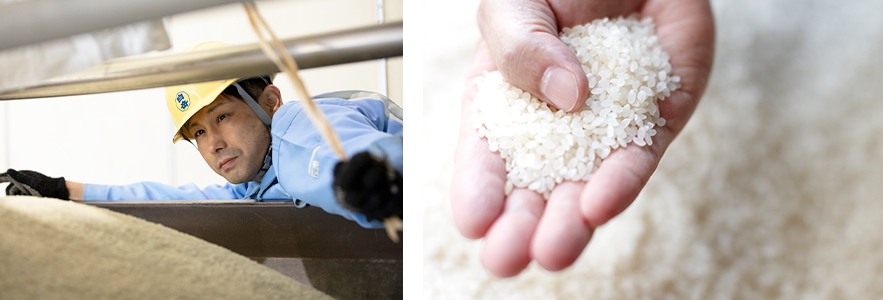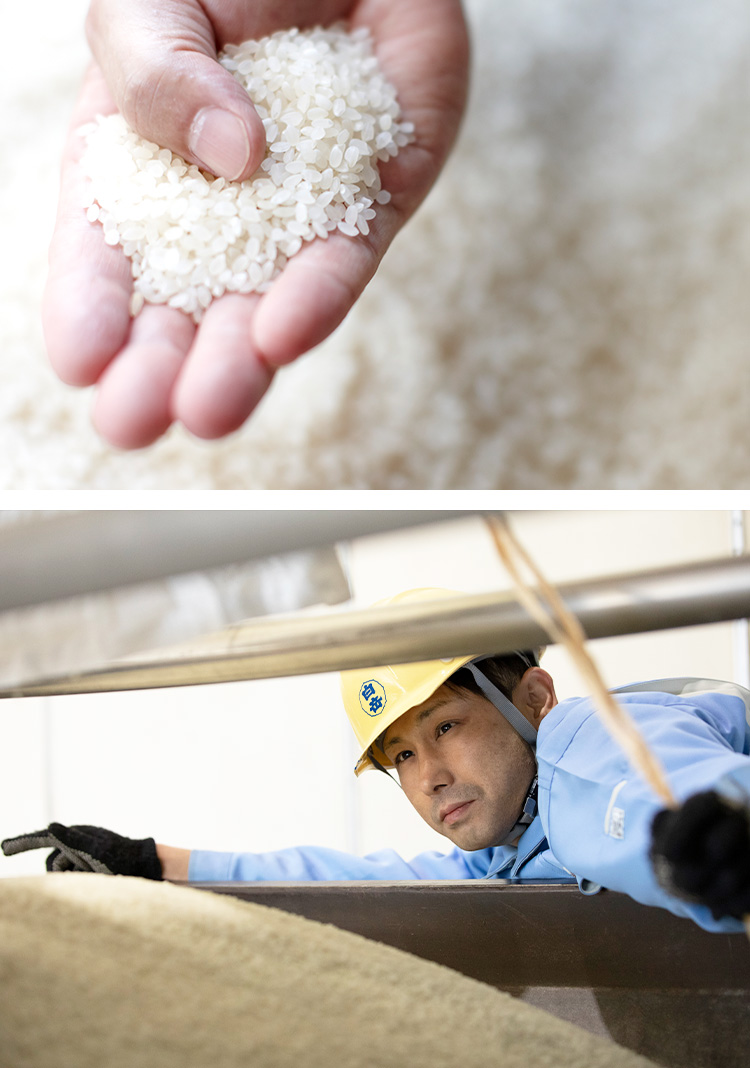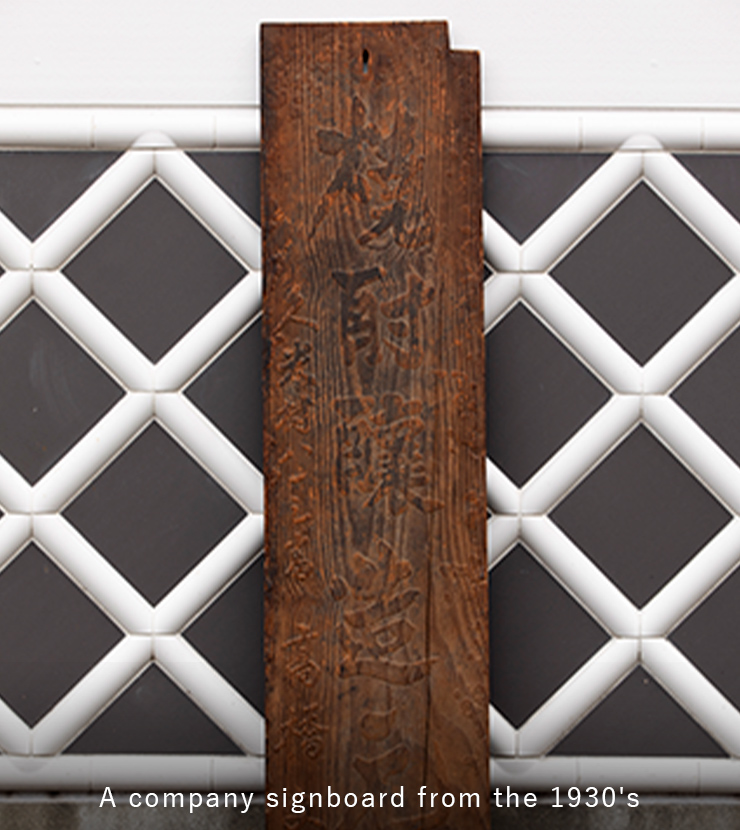Learn
- HOME
- >Learn
- >The 500 Year History of Kuma Shochu
The 500-Year History of Kuma Shochu

01.The Sengoku Period (1467-1590)Is Kuma Shochu the Oldest Shochu in Japan?
Few written records remain regarding when people began drinking Shochu (distilled liquor). However, it is estimated that people have been enjoying shochu in the Hitoyoshi Kuma region since at least the Sengoku (“Warring States”) Period (1467-1590).
The Sagara Clan ruled the Hitoyoshi Kuma region at the time and actively traded throughout Southeast Asia. It is said the introduction of distillation techniques from the Chinese mainland during this time may have been the catalyst for the creation of Shochu. Since the warm climate of that southern region is not well suited to the production of Sake, the alternative of Shochu quickly captured the hearts of the local population.
The earliest mention of Shochu in Japan was discovered in 1954 in Koriyama Hachiman Shrine in Kagoshima Prefecture, on the border of Hitoyoshi Kuma. During a renovation, a wooden tag was found with graffiti scrawled on the back by one of the shrine’s carpenters, which read, “The head priest is so stingy, not once did he treat us to Shochu!”
The graffiti dates to 1559, when the Sagara Clan was at its peak and its territory stretched to include the region where the shrine is located. This suggests that Shochu was already being shared and enjoyed by the common people within Sagara territory.
While the graffiti, unfortunately, does not offer any details about its ingredients or flavor, we do know that sweet potatoes had yet to reach Japan during this period, so it seems likely that the Shochu in question was made from rice or grain in the style of Hitoyoshi Kuma.

02.The Edo Period(1603-1868)Kuma Shochu: Loved by Both the Warrior Class and the Common People
Production of Rice Shochu became more common in the Hitoyoshi Kuma region during the Edo Period – a result of new distilling techniques being brought back from the Japanese invasions of Korea during the Imjin War (1592-1598).
While there were harsh restrictions on the sale of Shochu, small amounts could be made for personal use to a certain extent. Rice, however, was such a crucial commodity to the ruling class that, even in a major rice-producing region like Sagara, its use in the production of Shochu was generally not allowed.
Rice Shochu became a privileged drink for the Samurai-warrior and upper classes, whereas farmers would drink Shochu made from barley or other grains. Indeed, drinking Shochu seems to have been one of the favorite pastimes of the common people. The lyrics of “The Kuma Woodcutter’s Song,” a folk song passed down in the Hitoyoshi Kuma region, call to “Lay down your saw, your file, your measure, and go have a drink!” It was also said that when the last of their Shochu was gone, some people would tie the empty gourd-flask to their belts so they might sniff the lingering scent from the container as they worked in the fields.
Unsurprisingly, Shochu became a significant source of revenue for the Sagara Clan. Shochu made from good-quality rice was a particular object of envy for the other territories, who often only had Shochu distilled from leftover lees (sediment) of sake.
At the time, Shochu was only allowed to be sold by those who had been bestowed “brewer kabu” (“brewer shares,” which acted as the rights to produce and sell Shochu) by the local ruling clan or by operators of “iritachi,” a kind of inn, similar to a modern-day pub where people could rest and drink, among other things, Shochu. Some of these iritachi operators eventually started to produce their own Rice Shochu. Today, several distilleries of the 27-member Kuma Shochu Distillation Union can trace their direct lineage to iritachi establishments of this period.



03.Meiji Period (1868-1912) to Present:Kuma Shochu Becomes a World-class Liquor
With the beginning of the Meiji Restoration, the Shochu culture of the Hitoyoshi Kuma region immediately began to flourish. The restrictive ‘brewer kabu’ and ‘iritachi’ systems were abolished, opening the floodgates for Shochu distributors to begin operating independently, transforming Shochu into a drink accessible to the masses almost overnight. According to one report of the time, there were over 60 proprietors in operation and at least one distillery in most villages.
The Kuma Shochu Makers Association (the predecessor of the modern-day Kuma Shochu Distillation Union) was founded in 1884, and it was around this time that production began to increase year after year. In 1900, Takahashi Shuzo Co. was established and began operations.
During the Taisho Period (1912-1926), several dramatic developments in production techniques occurred, further advancing Kuma Shochu’s popularity and standing. One of these was changing the base ingredient from brown rice to white rice. Another was the introduction of the ‘secondary preparation’ method. Together, these changes greatly improved production efficiency and further increased shipping volume.

After World War II, whispers of Kuma Schochu gradually spread throughout the country, starting in neighboring Miyazaki and Kagoshima Prefectures, then Fukuoka, and eventually the whole of Kyushu Island. By 1980 its popularity even extended as far as the Kansai and Kanto regions of Japan’s central Honshu Island.
This growth in popularity was propelled by the widespread adoption of the newly developed ‘vacuum distillation method,’ a process that preserves the inherent deep flavors of the Rice Shochu while simultaneously imparting a smooth texture. Takahashi Shuzo was among the first to incorporate this ‘vacuum distillation method,’ creating what has become one of its longest-selling and best-loved products, Hakutake.
In 1995 Kuma Shochu received a great honor when it was granted a “Geographical Production Specification” by Japan’s National Tax Agency. This stipulates that “The term 'Kuma Shochu' may only be used to refer to a product distilled and bottled within Hitoyoshi Kuma, using groundwater from that region and Japanese-produced ingredients (rice, rice koji) in its creation." Thus joining the ranks of Cognac, Bordeaux wine, and others, Kuma Shochu was finally recognized as a product uniquely produced in its region.
The dedication of craftspeople over generations, in concert with the rich natural landscape of Hitoyoshi Kuma, has elevated Kuma Shochu to a genuine world-class brand.
Note - Geographical Indication Production Region Specification
This refers to a label that specifies the region of production when it is thought that the quality and reputation given to a type of liquor intrinsically originates from the geographical location of production. Scotch, bourbon, cognac, Armagnac, Bordeaux, Chablis and champagne fall into the same category overseas, all as products whose place of production is clear from the name.
*Source; Masanori Kawagoe, “Guide to Shochu Culture” (1987), Kagoshima Folk Museum.